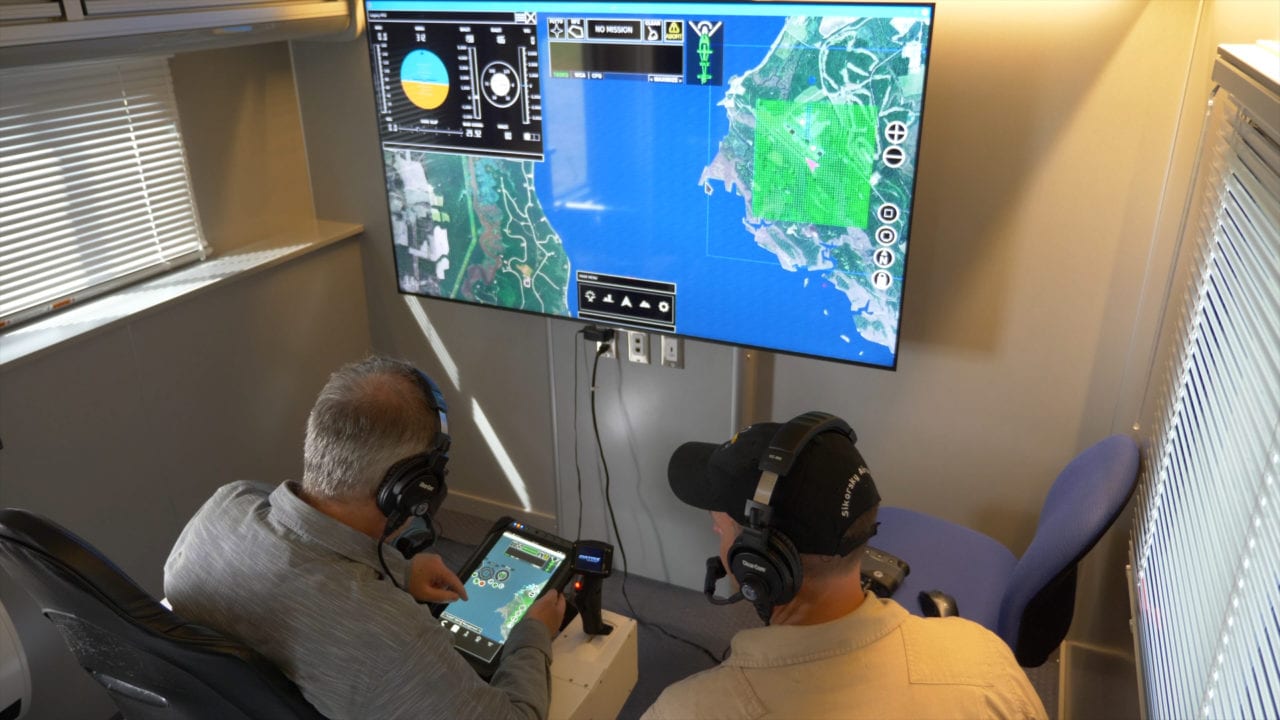
ALIAS training. Photo courtesy of DARPA
The Defense Advanced Research Projects Agency (DARPA) has developed a drop-in kit to enable the automation or remote-control of fixed-wing and rotary aircraft. Called Aircrew Labor In-Cockpit Automation System (ALIAS), the U.S. Army used it to fly a Sikorsky S-76B helicopter in a demonstration earlier this month.
Next up? A Black Hawk.
“ALIAS’ ultimate goal is to provide a flexible, extensible automation architecture for existing manned aircraft,” Graham Drozeski, program manager for ALIAS, told Avionics International. The U.S. military wanted something that could add a high level of automation to its aircraft without extensive, expensive, time-consuming avionics upgrades. DARPA came up with ALIAS, which can be inserted and removed easily and allows platform-agnostic tablet control. “The ALIAS UH-60 will be used … to exercise the system in combat aircraft performing realistic mission scenarios,” he added.
Further, according to Drozeski, ALIAS was designed to be “easily and rapidly ported to additional aircraft,” allowing the same technology to serve its purpose across much of the fleet. He said that the system “makes selective use of commercial off-the-shelf components and existing aircraft components where possible.” That helps keep costs and timelines down.
The system can be controlled from a laptop that uses a radio link to connect to the aircraft or within the aircraft itself without a ground element. The plan isn’t to replace a pilot completely — but maybe a co-pilot. Offloading attention-consuming tasks like hovering in the wind to ALIAS can help there.
“Really, we want the pilot’s eyes and mind on the fight rather than holding an altitude,” Drozeski said in a statement. “The capability ALIAS provides to a crewmember is really like a co-pilot,” said Drozeski. “It can fly routes, plan routes, execute emergency procedures and do all that perfectly.”
Lt. Col. Carl Ott, the pilot who conducted the test, agreed. Ott is the chief of flight test for the U.S. Army Aviation and Missile Research, Development and Engineering Center’s Aviation Development Directorate.
“The Army refers to this as Mission Adaptive Autonomy,” he said. “It’s there when the pilot needs the aircraft to fly itself and keep it free of obstacles, so the pilot can focus on more of the mission commander type role. But the pilot is able to interact with the system to re-suggest, re-route or re-plan on the fly.”
In line with DARPA’s goal of easy integration, ALIAS is also relatively easy to learn and use. Drozeski said that Ott practiced on a simulator over three days ahead of the demonstration. On the same day, after the test flight, a non-pilot spent 45 minutes on the simulator and then used ALIAS to operate the helicopter by tablet with a safety pilot on board.
In conjunction with Sikorsky, which has invested in the ALIAS project and is the primary performer for the current and third phase of the program, DARPA is currently working on UH-60 integration. It expects to have the platform ready for testing in the first quarter of 2019.
Ultimately, DARPA hopes that ALIAS’ drop-in nature and flexibility, which allows adjustments and third-party applications, will ease the move to automation across the military. Taking care of the Black Hawk, the Army’s biggest fleet, would go a long way in that direction.